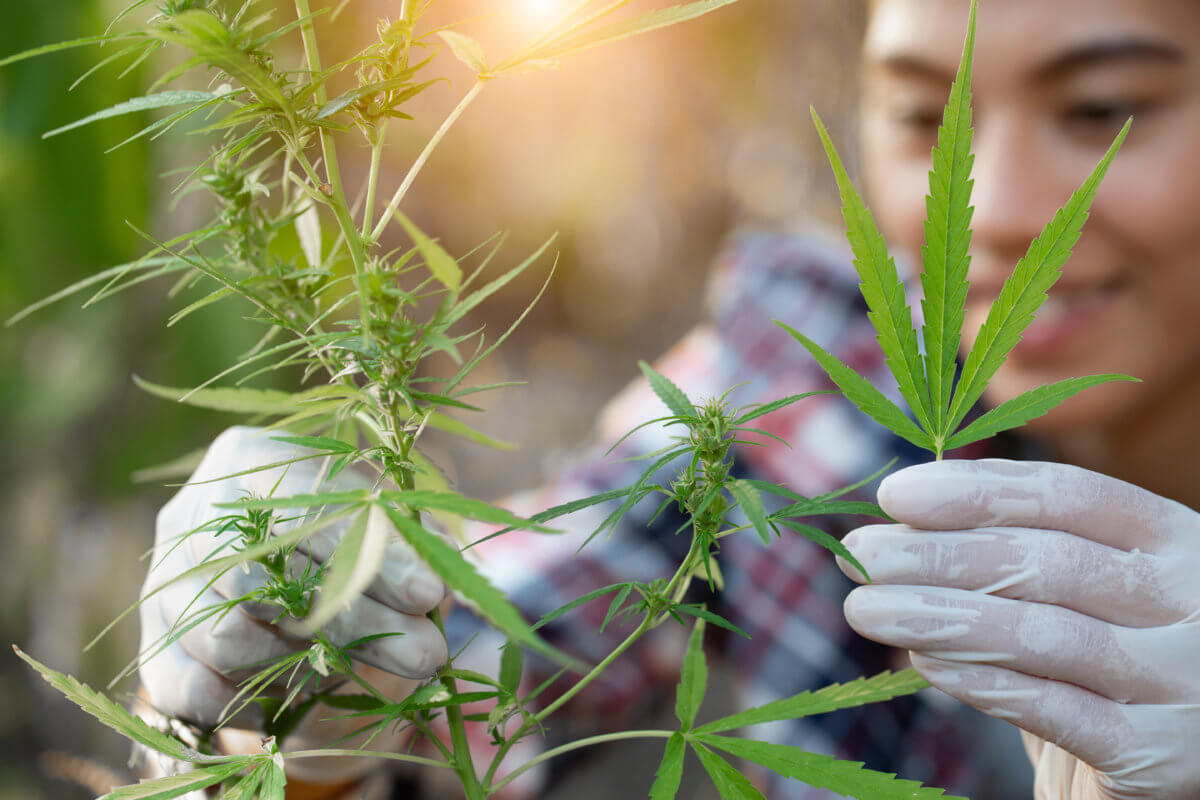 The Role of Patents in the Industry, Now and in the Future
The Role of Patents in the Industry, Now and in the Future
Paul Coble is an intellectual property attorney and Chair of NCIA’s Cannabis Manufacturing Committee; Scott Seeley is an intellectual property attorney with Eastgate IP and is Organizer of the Cannabis Manufacturing Committee
Competition in the cannabis industry has always been fierce. To date, most competition has focused on securing licenses and sales territory. But, as markets saturate and the green pastures are all claimed, the battlefronts must shift. Cannabis companies now look to collect non-geographic assets, such as market share, profitability advantages, and a durable brand presence.
Intellectual property law provides mechanisms to capture and monetize these intangible assets. Assets that give a company a competitive advantage can build value into a business beyond its balance sheet. Well-crafted IP portfolios not only deter freerider copying, but are also valuable assets that can be sold, licensed, or provide incentive for investment or acquisition by larger entities. Businesses with a strong IP strategy are able to maintain their edge over their competitors by protecting their investments in technology and marketing to discourage competitors from utilizing their newfound developments or improperly capitalizing on their brand recognition.
Ignoring cannabis IP not only leaves this value on the table, but exposes the business to unnecessary risk. As in all other industries, cannabis companies must recognize that competitors have IP portfolios that may need to be avoided or licensed. Modern competition requires solidifying your own rights as well as understanding the rights of others.
Intellectual property is often broadly broken out into four major categories. Each category is tailored to protect different forms of intangible assets:
- Patents (Technological Developments)
- Trademarks (Brand Recognition, Consumer Goodwill)
- Copyright (Original Authorships and Expressions)
- Trade Secret (Information Providing Competitive Advantage)
This blog post overviews patents, and how patents can be used by cannabis businesses to protect their technological advancements. This is the first of a 3-part series about cannabis IP. The series will culminate with a Q&A-based webinar on April 19 at 1:00 PM ET. Advance questions can be sent to paul@thalo.io.
What are Patents?
Patents protect technological advancements and can be used to exclude others from making, using, importing, or selling a claimed technological innovation.
Patents are often used by businesses to build walls around technologies they develop to temporarily prevent competitors from using the same advantages. Companies also use patents to build portfolios of technology that can be sold or licensed like any other asset, or used to bolster their valuation for acquisition or investment opportunities.
But patents are not just used to block competition, they can also be a tremendous source of information about technological developments in the field. While patent discovery tools are admittedly lacking at the moment (GooglePatents is a good place to start), the details in a patent can often short-circuit months or years of work. Of course, depending on the patent claims, you may need to license the patent in order to use that information. But that type of information-for-licensing-rights exchange, with the right mentality on both sides, is the foundation of an efficient industry.
Here are just a few examples of the cannabis technology that may be patent eligible:
- Cannabis Strains
- Formulations for Extracts, Topicals, Tinctures, Vape Liquid, Edibles
- Vaporizer Design
- Cartridge Design
- Extraction Methods
- Manufacturing and Processing Methods
There are three types of patents that can be used to protect cannabis technology: Utility, Design, and Plant. These types of protection are not mutually exclusive and sometimes can be combined to form a more comprehensive protection strategy.
Utility Patents
Utility patents are the most popular type of patent, offering the broadest and strongest form of protection. Utility patents last 20 years from the date of filing and are good for protecting nearly any new technological innovation including formulations for extracts, topicals, tinctures, or edibles, new vaporizer designs, new improvements to processing or manufacturing methods, and similar developments. Utility patents can also be used to protect new cannabis genetics, at least theoretically. As discussed below, however, there are several practical barriers to patenting cannabis genetics.
A significant benefit of utility patents is that they can protect the actual function of an innovation, rather than just the outwardly recognizable features or the specific implementation. This aspect of protection sets utility patents apart from other forms of protection like design patents and copyright, which are limited non-functional aspects.
Design Patents
Design patents protect an item’s unique ornamental appearance. Design patent protection is sometimes easier to obtain than utility patents because design patents only protect the look of an item, not how it works. So design patents do not protect against someone selling a functionally identical device with a different outward appearance. This narrower protection also lasts only 15 years instead of 20.
Nevertheless, design patents can be a strong tool to protect products that have a novel and distinct design aesthetic. They can cover the visual appearance of vaporizer batteries or cartridges, retail packaging, even unique dispensary displays. In some cases, design patents can be effectively combined with trademark and trade dress protections to create a highly defensible brand style.
Patenting Cannabis Strains
The most common questions about cannabis patents usually relate to patenting strain genetics. Newly developed strains can be protected by both utility and plant patents, with varying rights and requirements. Cannabis strains may also, theoretically, receive pseudo-patent protection under the Plant Variety Protection Act of 1970 (“PVPA”). As noted below, however, current practical realities make PVPA protection unattainable for most cannabis strains.
Both plant and utility patents can protect cannabis strains, but they do so very differently. Utility patents cover newly invented compositions of matter and, therefore, can be used to prevent copying a novel genetic sequence. These patents literally cover specific sequences of DNA base pairs. A key requirement of utility patents is that the applicant must enable others to make and use the same invention once out of patent. While it may be possible to meet the enablement requirement with a transgenic breeding or CRISPR gene editing, the more common method of enabling plant gene patents is with a biological deposit of seeds or other propagation material with a public organization. So long as cannabis remains federally illegal, it can be difficult or impossible to make the deposit within the U.S. Some applicants have had success making the seed deposit at foreign centers, but the growth of cannabis genetic patents has been slowed by these requirements. When cannabis is eventually descheduled, the practical barriers to genetic patents will fall and that may trigger a rush by more companies to seek patents for their proprietary cannabis strains.
Plant Patents
Another form of patents, plant patents, can protect new plant varietals that have been reproduced asexually. Although cannabis plants are relatively easy to reproduce asexually via cloning or cutting, one disadvantage of this form of protection is that plant patents only cover genetically identical copies, reproduced asexually from the claimed plant. That means to infringe a plant patent, one must physically clone the patented plant–a narrow base for an infringement claim.
Plant Variety Protection Act
The last vehicle that can protect a new cannabis strain is the Plant Variety Protection Act that was designed specifically to protect sexually reproducing plants, such as cannabis.
The PVPA, however, comes along with a strict requirement that at least 3,000 seeds of the claimed plant species be deposited with the U.S. Department of Agriculture in Fort Collins, CO. The USDA will not accept any deposits for plants that are classified as controlled substances, including cannabis. Meaning that, for the time being, PVPA protection is unavailable for cannabis plants that do not qualify as hemp (less than 0.3% d9-THC).
The Process – How to Get a Patent
All patents start as applications which must be examined and approved by the U.S. Patent & Trademark Office (“USPTO”) to become granted patents. The application process, from start to finish, can last 1-5 years and cost anywhere between a few thousand to tens of thousands of dollars.
The examination involves a review of the patent application, as well as related literature published before your application was filed (also called “prior art”). An examiner with technical expertise in the application’s field will search for prior art and determine whether the application meets all statutory requirements. Most notable of those requirements are that the invention must cover eligible subject matter and be sufficiently inventive to warrant a patent.
The prosecution process typically involves letters back-and-forth between the inventor and the Patent Office. It is often thought of as a negotiation — nearly all patent applications receive at least one rejection. The applicant is given an opportunity to change what the patent covers or explain why the rejection was wrong. Only if and when the Examiner is satisfied that all statutory requirements are met will the application be allowed to issue as a patent.
How will Patents Shape the Cannabis Industry?
Like it or not, patents are rapidly becoming a major force in the cannabis industry. The cannabis industry is in a unique position to determine the role intellectual property will play, but one thing is certain: cannabis IP cannot be ignored. Some companies, like Canopy Growth, Nextleaf, and various pharmaceutical companies, are aggressively developing patent portfolios and high-stakes patent litigation is already underway. Additionally, holding companies known as “non-practicing entities” have been formed to purchase valuable patents covering key aspects of cannabis cultivation, manufacturing, and consumption.
But these forces do not have to dominate the industry. Patents were originally designed to promote scientific advancement, not inhibit it. When the IP rights of others are respected and technology is licensed widely at reasonable rates, intellectual property can cut years and millions of dollars from research budgets. Some industries have found success with patent cooperatives and similar pooled-patent arrangements. The future may see some combination of patent licensing with blockchain technology, NFTs, or decentralized autonomous organizations (DAOs).
We will continue the discussion as to what an enlightened approach to intellectual property could look like in the cannabis industry in our webinar scheduled for April 19 at 1:00 PM Eastern. Please send any advance questions to paul@thalo.io.


Follow NCIA
Newsletter
Facebook
Twitter
LinkedIn
Instagram
–